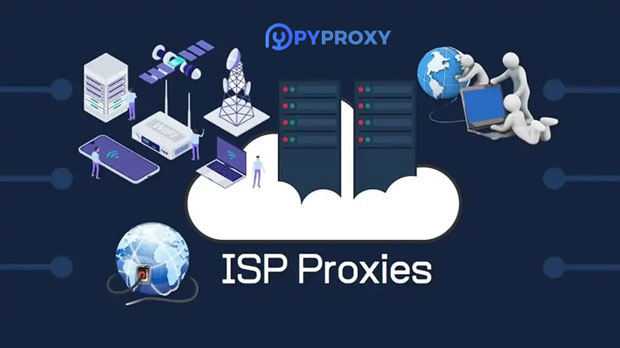The debate between using static ISP proxies and datacenter proxies is crucial for various online tasks that require anonymity, speed, and reliability. Both types of proxies serve different purposes, and understanding when to opt for one over the other can significantly impact your project or business. Static ISP proxies, often linked to real ISPs, provide a higher level of trust and are more resistant to blocks and CAPTCHAs compared to Datacenter proxies, which are commonly associated with datacenters and are more easily detected by websites. This article will explore when it's best to use Static ISP proxies instead of Datacenter proxies, providing insight into their respective benefits, limitations, and ideal use cases. Understanding Static ISP Proxies and Datacenter ProxiesBefore diving into when to use each type, it’s important to understand the fundamental differences between Static ISP proxies and Datacenter proxies.- Static ISP Proxies are proxies provided by internet service providers (ISPs). These proxies are associated with real-world residential IPs, making them look like regular home users. Static ISP proxies do not change frequently, providing a steady IP address that is ideal for tasks requiring consistency. - Datacenter Proxies, on the other hand, are proxies originating from data centers. These are typically faster and more cost-effective than Static ISP proxies. However, they are easy to identify due to their origin in data centers, making them more likely to be flagged or blocked by websites.Advantages of Static ISP ProxiesStatic ISP proxies come with several advantages that make them particularly suitable for certain use cases:- Higher Trust and Authenticity: Since Static ISP proxies are assigned by actual ISPs, they mimic the behavior of real users. This makes them harder to detect compared to Datacenter proxies, which often get blocked due to their data center origins. Static ISP proxies offer more reliable access to websites that are sensitive to proxy traffic, such as social media platforms and online banking websites.- Consistency and Stability: Unlike Datacenter proxies, which may rotate IP addresses frequently, Static ISP proxies retain the same IP address for long periods. This makes them ideal for tasks that require a persistent and stable identity, such as account management, email marketing, or e-commerce activities.- Better Performance for High-Risk Tasks: Certain tasks, such as web scraping, account creation, and social media automation, can trigger security measures on websites. Static ISP proxies provide a more secure and stable way to perform these activities without being blocked or flagged.Advantages of Datacenter ProxiesWhile Static ISP proxies are ideal for specific situations, Datacenter proxies also have their place in certain tasks:- Cost-Effectiveness: Datacenter proxies are typically cheaper than Static ISP proxies. If you're running tasks that don’t require high levels of anonymity or consistency, Datacenter proxies might be more cost-effective.- Faster Speed: Datacenter proxies are generally faster than Static ISP proxies. Since they are hosted in data centers designed for high-performance, they can offer better speeds, especially when large amounts of traffic are required, such as during large-scale data scraping or automation tasks.- Use in Non-Sensitive Applications: For tasks that do not involve sensitive data or high risk of blocking, Datacenter proxies can still perform well. These tasks could include market research, competitive analysis, or general web scraping, where speed and cost are more important than long-term stability.When Should You Use Static ISP Proxies Instead of Datacenter Proxies?Now that we understand the benefits of both types of proxies, let’s explore scenarios where Static ISP proxies are the better choice:- When You Need to Avoid Detection: If your activity involves accessing websites or platforms that are sensitive to proxy use, such as social media networks, financial institutions, or government websites, Static ISP proxies are your best bet. These sites have sophisticated detection systems that easily flag Datacenter proxies. Static ISP proxies, being tied to actual ISPs, appear as legitimate user traffic, making them less likely to be blocked or flagged.- For Consistent, Long-Term Projects: If your online operations require the same IP address over time, such as for account management, customer support interactions, or content moderation, Static ISP proxies provide the necessary stability. This ensures that your tasks are consistent and uninterrupted by IP changes, which can be a common issue with Datacenter proxies.- When Conducting Web Scraping or Data Mining: Web scraping and data mining can trigger anti-bot measures on websites, especially if large volumes of data are being extracted. Static ISP proxies help avoid triggering these defenses, as they appear like regular user traffic and won’t get flagged easily. This makes them a better choice for scraping data from websites that are actively protecting against bots.- If You Are Managing Multiple Accounts: Social media and other online platforms often flag suspicious activity, especially if multiple accounts are being created or managed from the same IP address. Static ISP proxies allow you to manage several accounts without drawing attention, as they provide a more natural, user-like behavior compared to Datacenter proxies.- When Operating in a Competitive Market: If you’re involved in a highly competitive market where others are also using proxies, such as in e-commerce, Static ISP proxies give you a significant advantage. They ensure that your IPs remain undetected, allowing you to conduct your business without interference from competitors who might be using more easily detectable proxies.When to Stick With Datacenter ProxiesDespite their advantages, there are still cases where Datacenter proxies remain the better choice:- For Large-Scale Automation: If you're conducting tasks like ad verification, market research, or web scraping on a massive scale, Datacenter proxies can provide the necessary speed and volume at a lower cost. The speed benefits and the ability to handle multiple requests simultaneously make Datacenter proxies suitable for these use cases.- When Privacy and Anonymity Are Not the Top Priority: If your tasks don't require anonymity or a high level of privacy, Datacenter proxies may be sufficient. Tasks such as general browsing, light web scraping, or non-sensitive market research can be performed with Datacenter proxies without the need for the extra layer of security that Static ISP proxies offer.- If Budget Constraints Are a Concern: Static ISP proxies are often more expensive than Datacenter proxies, so if you have budget limitations and don’t need the extra security or consistency, Datacenter proxies can be a more economical option.Conclusion: Making the Right ChoiceChoosing between Static ISP proxies and Datacenter proxies depends on the nature of your online activity. Static ISP proxies are the superior choice when anonymity, stability, and avoiding detection are essential to your tasks. They are particularly beneficial for sensitive operations like social media management, web scraping, and multi-account management. On the other hand, Datacenter proxies offer speed and affordability, making them ideal for high-volume, low-risk tasks where privacy is less of a concern. By understanding your project requirements, you can make a well-informed decision that ensures your tasks run smoothly while minimizing the risk of detection or blocking.
Aug 15, 2025






















































